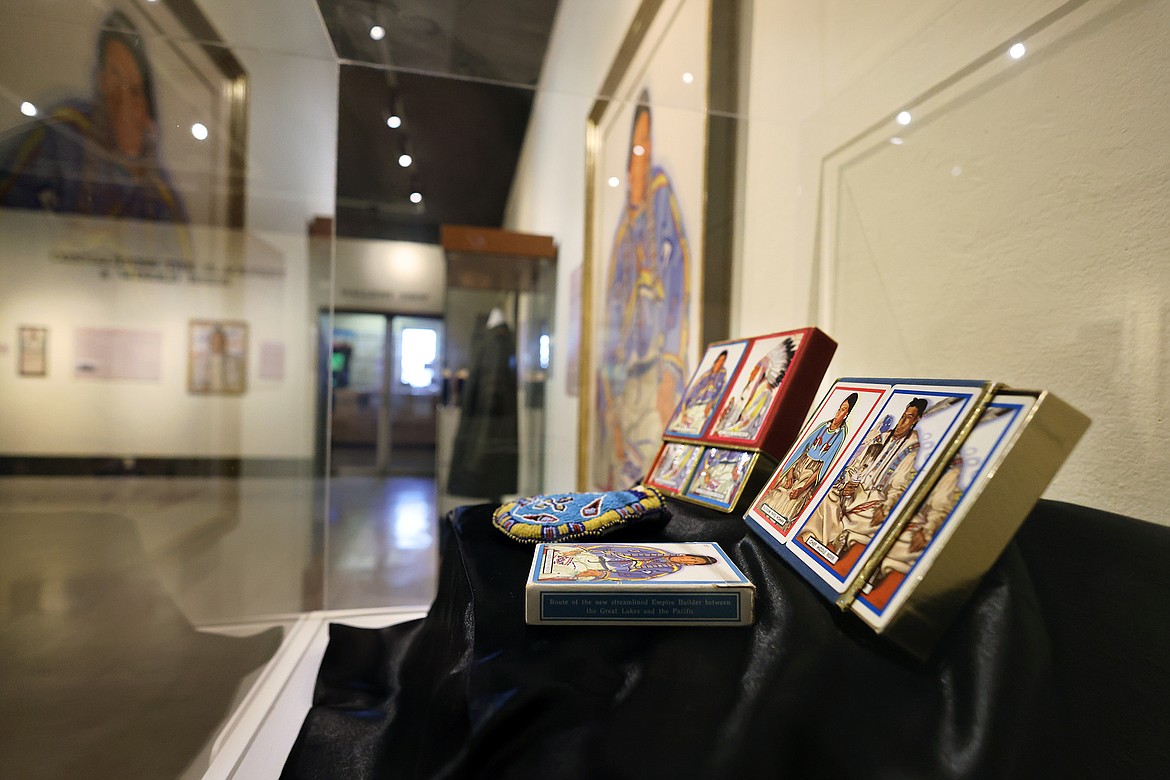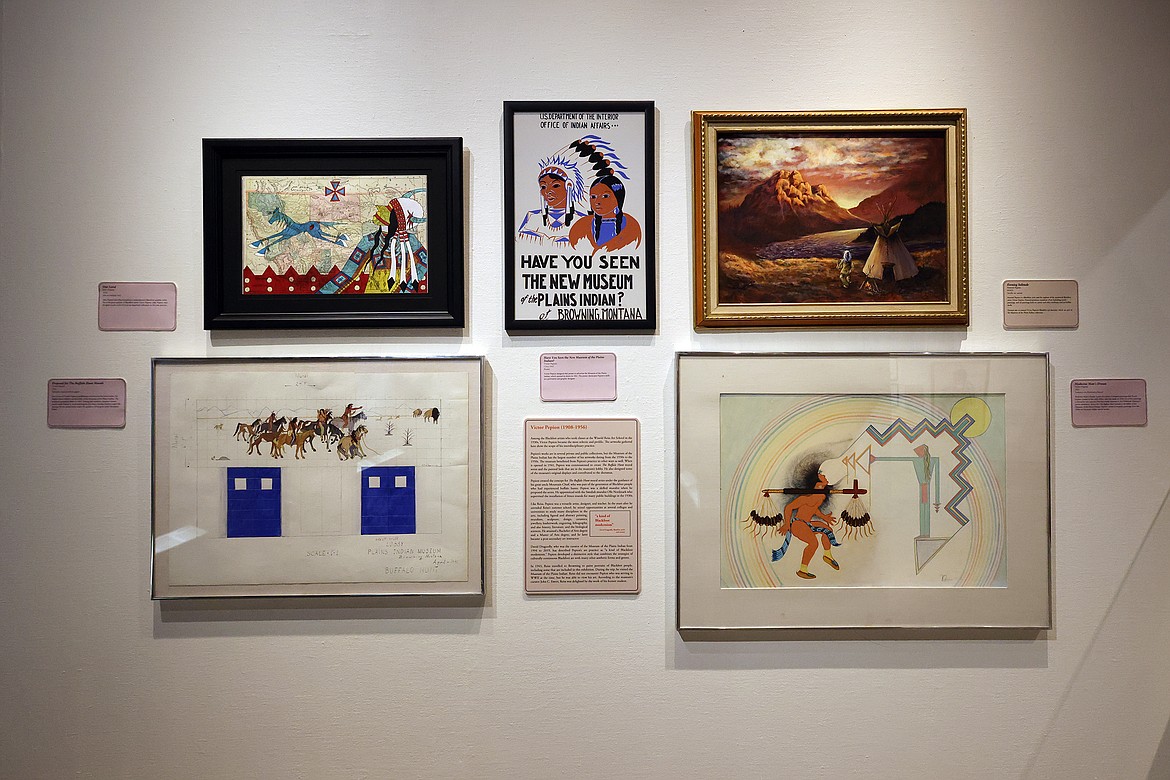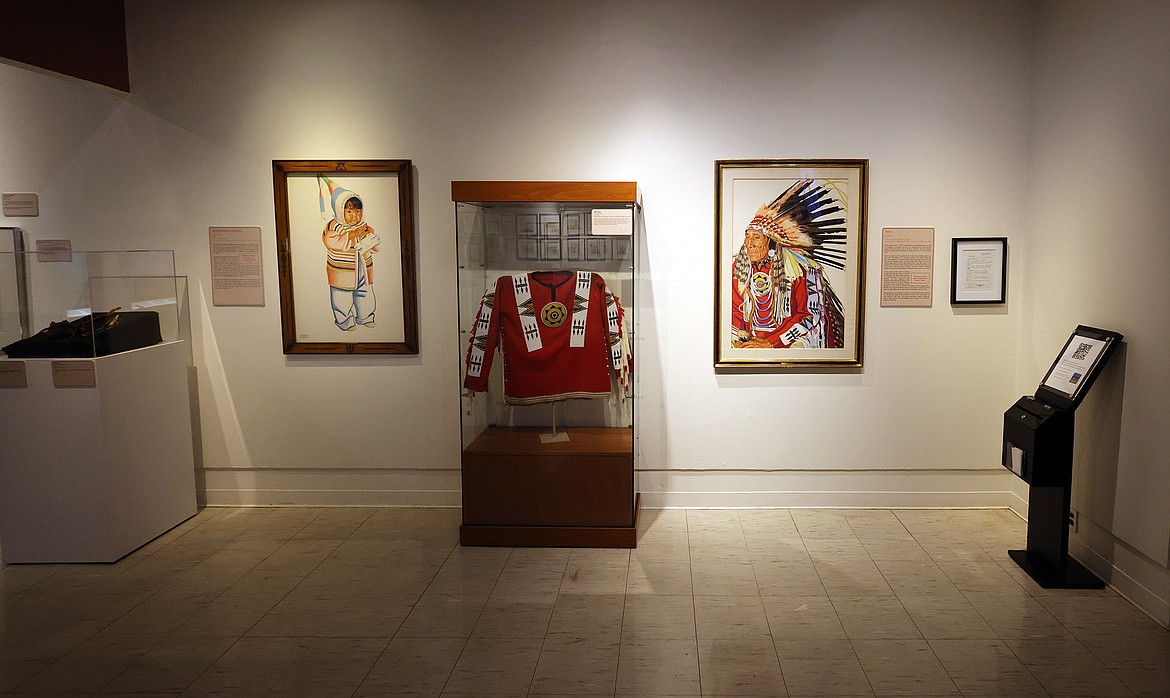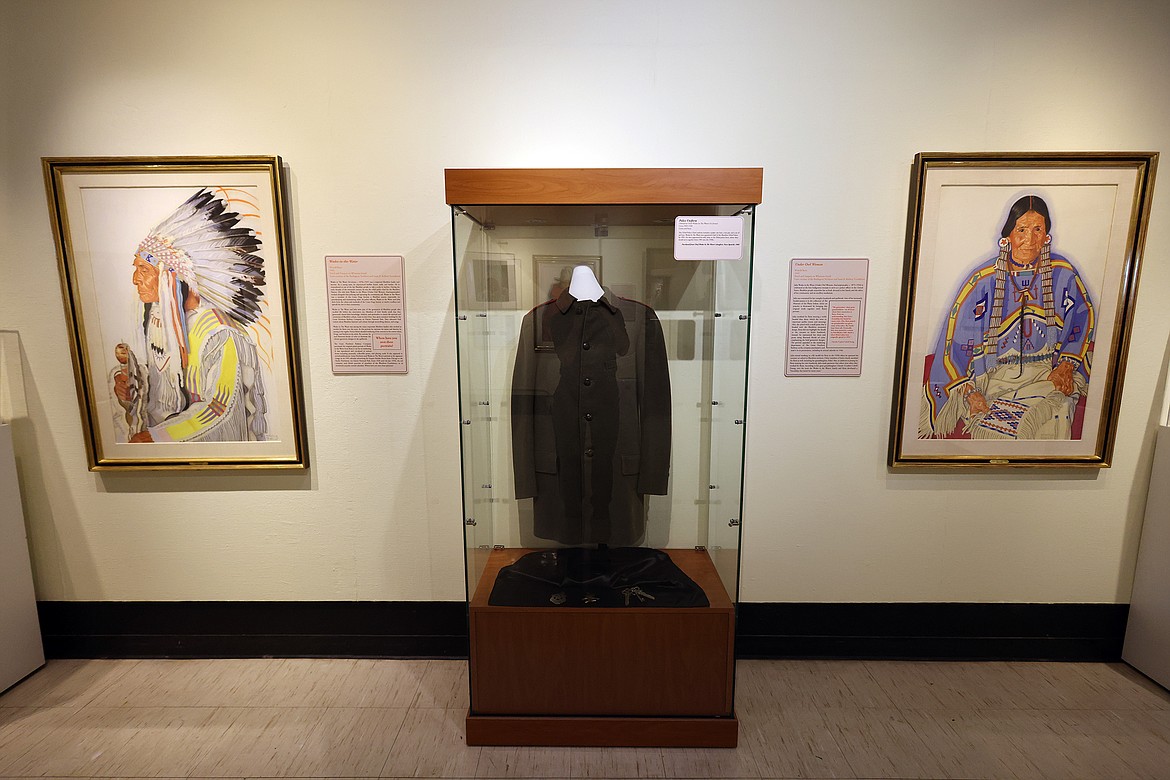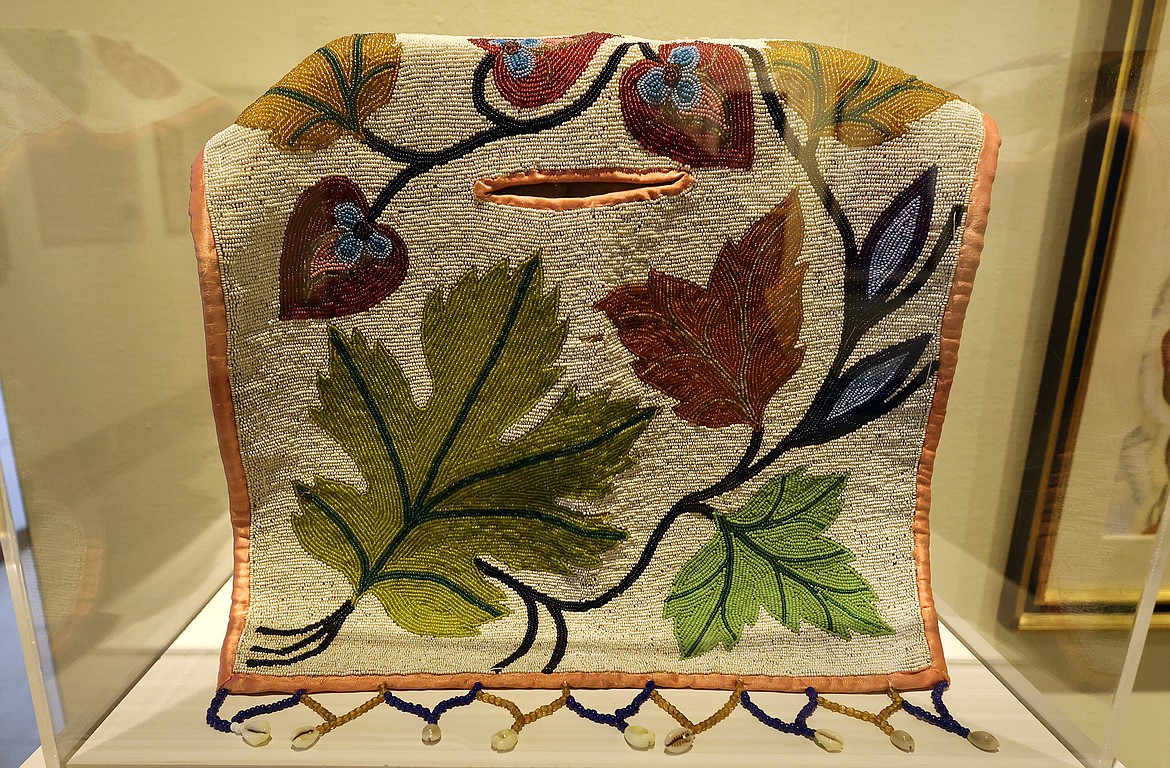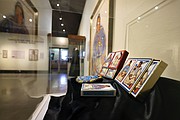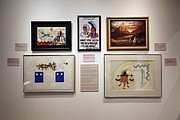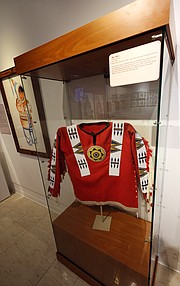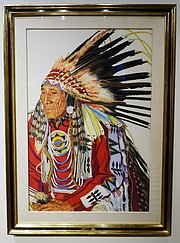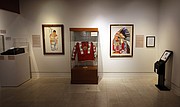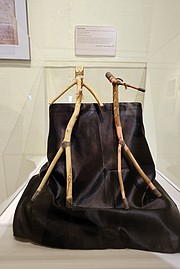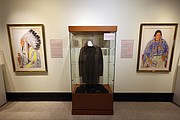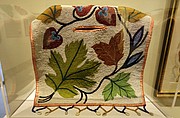Art exhibit returns Winold Reiss portraits to the Blackfeet Reservation
JEREMY WEBER | Hagadone News Network | UPDATED 2 years, 7 months AGO
For the first time in more than 60 years, the works of Winold Reiss are back on the Blackfeet Reservation, where many of them were created.
Through a collaboration between the Blackfeet Nation, Museum of the Plains Indian, the BNSF Foundation and the Glacier National Park Conservancy, an exhibit of nine of Reiss’ original pastel portraits entitled “Connections – the Blackfeet and Winold Reiss” will be on display in Browning through Oct. 29.
“We’re very excited to bring this important exhibit to the public and the Blackfeet reservation,” said Renee Bear Medicine, Curator of the Museum of the Plains Indian. “Reiss learned from and impacted inspiring Blackfeet artists then and now. The portraits are being displayed along with personal artifacts belonging to the people in the portraits, and alongside the artworks of those he influenced.”
The son of German artist Fritz Reiss, Winold Reiss was born in 1886 and followed his father’s footsteps by studying to become an artist before emigrating to the United State in 1913 to follow his fascination with Native Americans.
The purpose of the move was explained by the artist’s grandson, Peter Reiss, at the exhibit’s opening in Browning on May 27.
“After reading stories of the American West, my grandfather decided to come to America with the express purpose of creating a permanent living memorial to the Native culture and spiritual way of life with very accurate portraits,” Peter Reiss explained. “He was able to do just that, but along the way, he also forged lifelong friendships with the people he admired so deeply.”
Winold Reiss first came to Browning in the winter of 1920. Within moments of stepping off the train, he met Turtle, an accomplished Blackfeet grizzly bear hunter who would become his lifelong friend and the subject of many of Reiss’ portraits — one of which hangs in the exhibit.
While his subjects had many reasons for sitting for portraits, one was that Reiss paid well, between 50 cents and $1 per hour — between $10 and $20 in today’s money.
Returning to the reservation in 1927, this time Reiss was commissioned by the Great Northern Railway Company to produce more portraits to help advertise the railway's Empire Builder.
While many other artists sold their work to Great Northern during the same period, it was Reiss’ work more than any other artist that came to define their advertising campaigns.
Over the years, the GNR used Reiss’ images on a number of promotional items, from calendars and posters to playing cards, train menus and more.
IN THE summer of 1931, Reiss opened an art school along the shore of St. Mary Lake near the east entrance to Glacier National Park. While the school operated independently in 1931, it reopened in the summers between 1934 and 1937 sponsored by GNR.
Featuring classes in drawing, painting, sculpture, muralism and design, the school was taught by Reiss, his brother Hans and fellow German-born artist Carl Link.
Students could pay to attend the school and could even gain college credit through New York University, but Reiss always waived tuition costs for Blackfeet students.
Several notable Blackfeet artists attended the school, including Albert Racine, Isabelle McKay, Stanley Croff and Victor Pepion, whose works are also part of the exhibit.
Reiss is quoted in the exhibit to have said the Blackfeet artists were the “most talented students I ever had.”
The GNR wound up purchasing nearly 100 portraits from Reiss over the years, which are now a part of the collection belonging to the GNR’s modern-day successor, BNSF Railway.
WHEN GLACIER National Park Conservancy board member Cheryle “Cookie” Cobell Zwang began dreaming of a project that would benefit both the park and her fellow Blackfeet Tribal members, the work of Winold Reiss immediately came to mind.
Her great-grandparents had both sat for portraits by Reiss and she knew many others in the area who had relatives who had done the same.
The opportunity to draw in visitors to Browning and showcase the lives of those who were featured in Reiss’ painting was the perfect pairing Zwang was seeking.
“I thought this project could bring tourism to the reservation but could also tell a story that couldn’t be told anywhere else,” she said. “They are such iconic images. I knew many people would recognize them and appreciate them. They attract a lot of attention.”
Zwang approached fellow board member, and BNSF Railway Foundation President, Zak Anderson about the project and soon the ball was rolling.
“An idea is a very small thing unless you can get people to buy into it and make it real. It seems like this was an idea that everyone could get behind,” Zwang said.
Late in May, Zwang’s idea became reality.
“Making these paintings available to the public, here in Browning and the Museum of the Plains Indian is really significant,'' said Glacier Conservancy Executive Director Doug Mitchell. “This is a wonderful opportunity for all of us to explore Glacier’s complicated and sometimes fraught history, and to do so through the lens of the park’s first people whose living relatives give voice to the real stories of the people in Reiss’ work.”
Zwang had grown up hearing stories about her great-grandparents and had seen reproductions of their portraits produced by Reiss, but the exhibit in Browning was the first time she had seen the original pastels as well as the items the museum was able to display with them, which included some of her great grandmother’s beadwork and her original police uniform. Her great-grandmother, Julia Wades in the Water, was the first Indigenous woman in the United States to serve as a police officer.
“I knew that my great-grandmother was a fabulous craftsperson, but to actually see her work in person was truly amazing. It was an incredible experience and anyone visiting the museum gets to experience that as well,” Zwang said. “The whole focus of the exhibition is to bring the people in the portraits to life as well as the Blackfeet people who studied with Reiss.”
“Reiss had such a connection with the people and the land,” Zwang added. “My biggest hope is that this exhibit will help a lot of people discover the museum and everything it has to offer. I hope people come to appreciate the work of Winold Reiss for the amazing art it is and also for the amazing people in those portraits.”
Located at 19 Museum Loop in Browning, The Museum of the Plains Indian is open Tuesday through Saturday from 9 a.m to 4:30 p.m.
Reporter Jeremy Weber may be reached at 406-758-4446 or jweber@dailyinterlake.com.
ARTICLES BY JEREMY WEBER

Valkyries three wins from back-to-back state titles
Two years ago, the Bigfork Valkyries came into the season having never won a basketball state championship. Now, they enter the Class A state tournament in Butte this weekend as the favorites to win back-to-back state titles.

Valkyries win third consecutive divisional title
The classification for the Valkyries may be different this season but the result is the same.

Vikings fight to the finish at divisional tourney
The Vikings basketball season came to a close over the weekend as Bigfork fell to Butte Central and Frenchtown at the Western A Divisional tournament in Butte.


